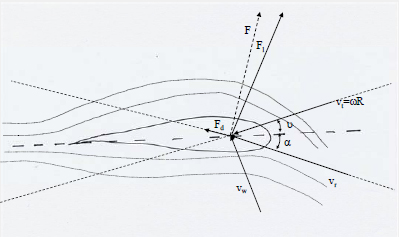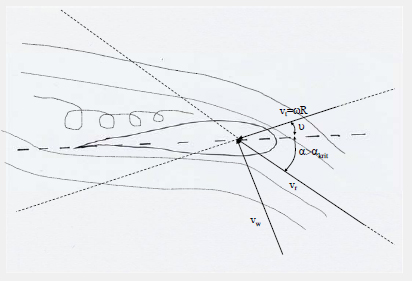Knowledge fuels change
For over a decade, Energypedia has shared free, reliable energy expertise with the world.
We’re now facing a serious funding gap.
Help keep this platform alive — your donation, big or small, truly matters!
Thank you for your support
Difference between revisions of "Wind Turbine Technology"
***** (***** | *****) |
***** (***** | *****) |
||
| Line 66: | Line 66: | ||
=== Generator with Fully Rated Converter === | === Generator with Fully Rated Converter === | ||
| − | + | [[Image:Generator with Fully Rated Converter Kopie.jpg|frame|center|Generator with Fully Rated Converter Kopie.jpg]] | |
| + | |||
| + | === Generator with fully rated converter and direct drive === | ||
<br> | <br> | ||
Revision as of 15:17, 27 August 2011
Wind turbine control concepts
Aerodynamics
Stall
Stall Control:
– Passive Stall:
Power of the wind turbine is limited by the aerodynamic characteristics
of the turbine.
– Active stall:
Power of the wind turbine is limited additionally by decreasing the pitch
angle (increasing the inflow angle ).
Pitch
Pitch Control:
– Power of the wind turbine is limited by increasing the pitch angle
(decreasing the inflow angle )
Wind turbine operation
Operation of Fix Speed Wind Turbine (passive stall)
• Start up (with open breaker) if wind speed > cut-in wind speed
• Close breaker
• Operation at constant blade angle over the whole wind speed range
• In case of large wind speeds: Power limited by aerodynamic profile.
Operation of Variable Speed Wind-Turbines
Start up (with open breaker) if wind speed > cut-in wi
nd speed
• Close breaker
• Below rated wind-speed
– Maximum power coefficient (Max. Power Tracking)
– Evt: Speed Limitation
• Above rated wind-speed:
– P=Pr
ated (Limited by power electronics converter)
– Pitching
• Advantages of variable speed operation:
– Lower cut-in wind speeds
– Higher efficiency, especially at low wind speeds
– Lower power variations (compared to fixed speed turbines)
• Disadvantage: More expensive!
Generator concepts
Fixed Speed Induction Generator
Only fix speed operation possible (stall control required)
• Reactive power compensation required
• No reactive power control capability. Additional devices required:
– TSCs (Thyristor switched capacitors)
– STATCOMs
• Risk of dynamic voltage collapse
GTZ Expert Workshop 2010: Grid and System Integration of Wind Energy, 22/23.11.2010, Berlin/Germany
y g p
– > Typically, wind generators based on induction generators are asked to
disconnect in case of voltage dips
Induction Generator with Variable Rotor Resistance
Simple concept for variable speed operation.
• Reactive power compensation required.
• No reactive power control capability. Additional devices required:
– TSCs (Thyristor switched capacitors)
– STATCOMs
• Limited LVRT capability. Dynamic voltage collapse problems have to
GTZ Expert Workshop 2010: Grid and System Integration of Wind Energy, 22/23.11.2010, Berlin/Germany
be mitigated by:
– Fast increase of rotor resistance during faults
– Additional reactive power compensation devices (typically TSCs)
Doubly-Fed Induction Generator
Generator with Fully Rated Converter
Generator with fully rated converter and direct drive
































